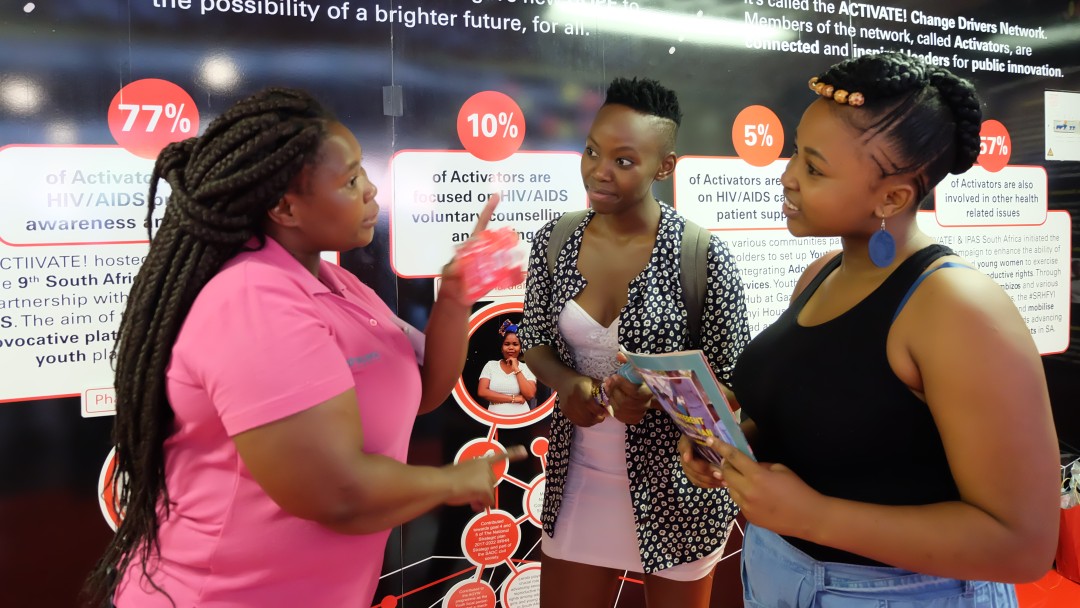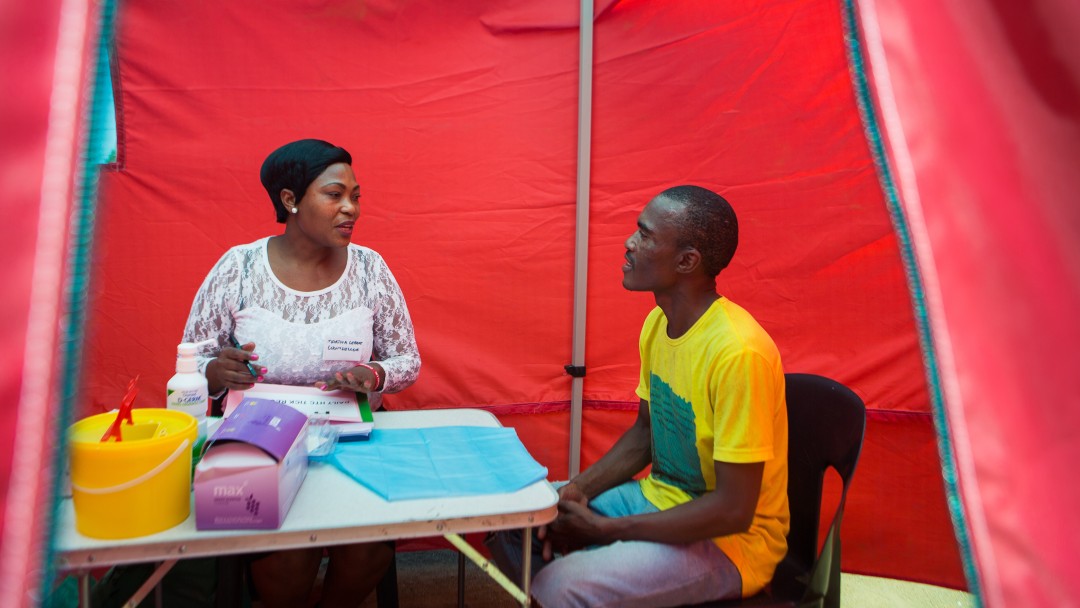News from 2019-11-29 / KfW Development Bank
World AIDS Day
Peer education: Young South Africans are committed to the fight against HIV/AIDS

1 December is World AIDS Day. It reminds us of the people who have died as a result of the infection and of the 37.9 million people around the world who live with HIV, many of whom receive inadequate treatment. Education and prevention continue to be flawed in many countries for very different reasons. From the early 1980s to 2013, around 74.9 million people have been infected with HIV. In 2018 alone 770,000 people around the world died as a result of the infection. Eastern and southern Africa are the hardest-hit regions, with 54 per cent of all new HIV infections. On behalf of the Federal Ministry for Economic Cooperation and Development (BMZ), KfW Development Bank is committing around EUR 434 million in 22 countries to HIV/AIDS measures. One of the priority areas is educating young people, particularly girls in Sub-Saharan Africa, and providing condoms and other contraceptives.
Situation in South Africa
In South Africa, 7.7 million people live with the virus – one out of five adults between 15 and 49 years old is infected. Progress has been made over the past few years: since 2010 the number of deaths has fallen by around half and the number of new infections fell from 390,000 to 240,000 per year in the same period. Within the scope of international agreements, the government has pledged to take measures that aim to ensure that 90 per cent of those affected are aware of their infection and receive treatment. Significant efforts will be necessary to achieve these objectives.
Over 60 per cent of those infected are women, and the number of new infections among young women between 15 and 24 years of age is also twice as high as it is among men within the same age group. An alarming fact is that only about half of the young people in this group know about the risk of HIV transmission through sexual contact. People coming from difficult circumstances like poverty, violence against women, a lack of prospects and disjointed families are the most likely to become newly infected. The financial dependence of young women in particular makes carelessness more likely when it comes to sexually transmitted diseases. It is a cycle that is difficult to break. The FC is supporting measures that aim to change behaviour through peer education. Enthusiastic young people are supported with leadership development, subsequently working in local communities and transferring the knowledge they gained about how to build self-confidence and take initiative.

Lesedi Meza from the Activate! network
One of the young team leaders of the nationwide youth network for Activate! is Lesedi Meza. Five years ago, she participated in the youth training programme offered by the South African trust DGMT, which the FC supports. “The programme taught me a lot about identity, leadership, the local government's work and how different interest groups can be integrated,” says Lesedi. Since 2012, over 4,200 young people have gone through the Activate! leadership programme and remain in contact with each other via a moderated platform that acts as a network. Today, Lesedi is a mentor for the Boy Child You Matter programme that she started herself. “In the programme I try to address neglected boys so that they can become better men. There are many instances of domestic violence in South Africa,” she explains. She mentors 15 male adolescents who no longer attend school or who are addicted to drugs. She would like to do things like impart entrepreneurial skills that can help them find jobs later. The country's unemployment rate is 29 per cent; among young people the rate is actually 53 per cent.
Bumb'Ingomso: Shape the future
Supporting girls and young women is also the aim of the Bumb'Ingomso programme in the Eastern Cape province, which has one of the highest infection rates in the country. The name is in the local language of Xhosa and means “shape the future”. The programme combines various HIV-prevention approaches for young women. These include medical offers like qualifying personnel specifically for working with young people and setting up separate office hours in the public healthcare centres, for example. Girls and women can help and support each other, as well as address questions about health, gender identity/norms and other common issues in clubs and associations that integrate support from specialists and meet in schools and city districts. The programme works with local communities and the police and justice system to combat sexual violence, and offers social-psychological counselling for those affected. Vocational guidance and preparation, along with offers in vocational schools and the local university, provide support, help create opportunities and career prospects, and find solutions for individual problems. The active Bumb'Ingomso network consists of around 9,000 young women who support each other and thus increase their resilience against HIV and other risks.
In addition to these two programmes, over 1.5 million HIV tests and consultation sessions are being financed in South Africa, and over 60 healthcare centres are being expanded and equipped, primarily in rural areas.

Share page
To share the content of this page with your network, click on one of the icons below.
Note on data protection: When you share content, your personal data is transferred to the selected network.
Data protection
Alternatively, you can also copy the short link: https://www.kfw-entwicklungsbank.de/s/enzBWrMC.CHYA
Copy link Link copied